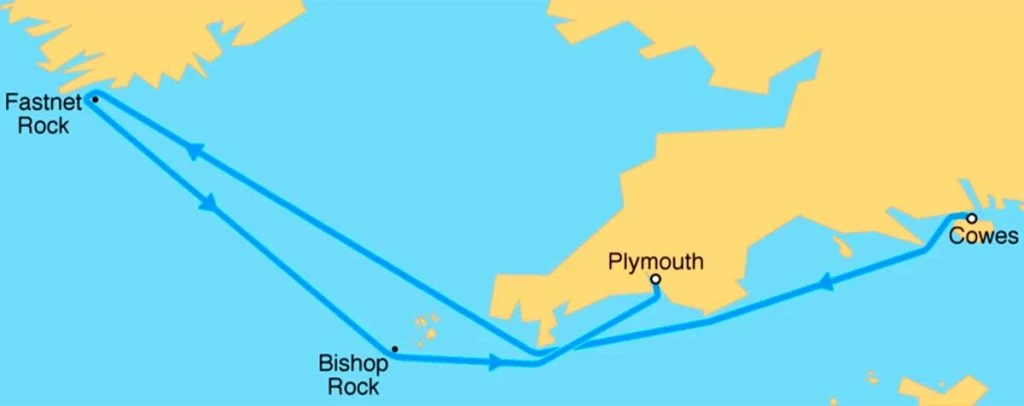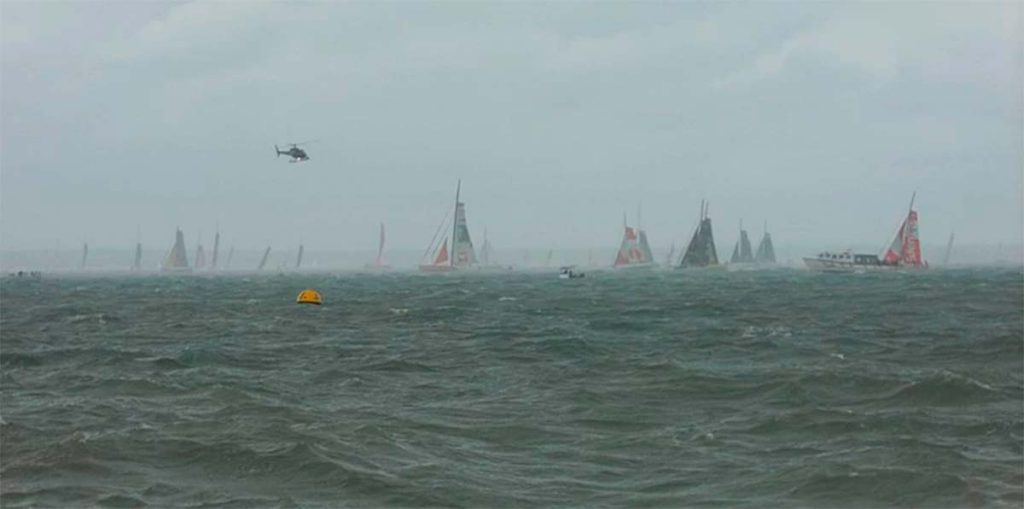Offshore sailing is one of the most challenging and exhilarating sports in the world, demanding skill, stamina, and courage from those who take part. For sailors, there is nothing quite like the feeling of being out on the open sea, with nothing but the wind and the waves to guide you.
But while offshore sailing can be a thrilling and rewarding experience, it is also one of the most dangerous, with sailors facing a range of hazards that can put their lives at risk. One of the most notorious incidents in the history of offshore sailing is the 1979 Fastnet Race disaster, a tragedy that shocked the sailing world and led to significant changes in the sport.
The Royal Ocean Racing Club’s Fastnet Race is usually held every two years. It’s been that way since 1925 and has always been held on the same 605 miles course.
Sailors set out from Cowes, an English Seaport on the Isle of Wight, and head to Fastnet Rock in the Atlantic, south of Ireland. They then back to Plymouth via the Isles of Scilly. It’s a famed test of some of the best sailors in the world.
The 1979 Fastnet race is notorious for something different though. On August 11, 1979, a storm with hurricane-force winds hit the yachts competing in the race, causing chaos and devastation.

75 boats capsized, 5 sank and 15 sailors lost their lives. Of the 303 yachts that started the race, only 86 finished. It was one of the deadliest yacht races in history and the events that unfolded that day shocked the sailing world to its very core.
A Dangerous Game
We often forget that mother nature is a harsh mistress. The disaster which occurred during the 1979 Fastnet race was caused by an extremely powerful storm that hit the boats as they were crossing the Irish Sea. Meteorologists hadn’t seen the scale of the storm coming, meaning even the most seasoned sailors competing were caught off guard.
- Donald Crowhurst and his Fatal Race Round the World
- What Happened to The Zebrina? Ghost Ship of the Great War
The storm came about due to the collision of a cold front with warm air from the Gulf Stream. This created a rapidly intensifying low-pressure system that generated hurricane-force winds and giant waves. The yacht crews were forced to do battle with winds of up to 70 knots (130km/h) and waves that reached 30 feet (9 meters).
This situation was further worsened by the design philosophy of the competing boats. Many crews emphasized speed over structural strength, taking advantage of new advances in fiberglass to build faster boats. But these new designs were untested in heavy seas, and were quickly overwhelmed by the weather.
The yachts caught at the storm’s center were the hardest hit. Many of these boats quickly capsized or were knocked over by the intense waves. Some yachts were dismasted entirely by the brutal winds. Sailors with decades of experience were thrown from their yachts and struggled to survive in the violent sea conditions.
Unfortunately, these extreme conditions made any kind of rescue operation incredibly difficult. If the yachts couldn’t survive the fierce winds and giant waves, what hopes did small rescue boats have?
Many of the yachts were already far from shore when the storm hit, meaning the rescue boats had to battle through the storm themselves to reach the stranded sailors. The rescue crews were at high risk and had to work tirelessly just to keep their own boats from capsizing. The last thing rescue efforts needed was the rescuers themselves needing rescue.
The limited communications technology of the time proved to be an added hurdle. Radio transmissions were often disrupted by the storm, making it difficult to coordinate rescue efforts and find all the boats that needed help.
Despite these challenges, rescue crews from the Royal Navy and other organizations worked tirelessly to save as many souls as possible. Royal Navy ships, RAF Nimrod jets, helicopters, lifeboats, and a Dutch warship, HNLMS Overijssel, all came to the rescue. While 15 sailors died, 125 were rescued by these combined efforts.
What Else Went Wrong?
Several factors beyond the sheer ferocity of the storm helped add to the tragic loss of life that day. A major factor was the lack of safety equipment and training at the time.
- Military Marine Mammals: A History of Exploding Dolphins
- A Real-Life Moby Dick? The Wreck of the Essex
Many of the boats weren’t carrying safety equipment that would be considered standard today. It was found that many of the yachts weren’t carrying life rafts, EPIRBs (Emergency Position Indicating Radio Beacons), or storm sails. Making this even worse, many of the sailors hadn’t been trained in the use of the safety equipment they did have, or how to handle extreme conditions.
This lack of safety equipment would have been disastrous on its own. But when added to the fact many of the boats were far out to sea, it was a recipe for disaster. Rescue crews had to battle through the storm to reach the boats.

The fact many of the boats were not equipped with radios or other communication devices meant the rescue crews had an almost impossible task finding the crews. Imagine looking for a needle in a haystack that is being blown through an industrial fan.
Ultimately, the 1979 Fastnet Race led to a major rethinking of racing, risks, and prevention. It highlighted the need for better safety measures and the importance of accurate weather forecasting in offshore sailing.
The tragedy led to significant changes in the sport, including the development of better communications and navigation technologies, improved safety equipment, and more rigorous regulations. Thankfully these have all helped prevent a repeat of the disaster.
In the end, the legacy of the 1979 Fastnet Race disaster is a testament to the resilience and determination of the sailing community. While the tragedy was a devastating event, it also sparked a renewed commitment to safety and innovation and has helped to make offshore sailing a safer and more exciting sport for sailors around the world.
And through the tragedy much was learned about these new designs of boats. The hulls that made it through the storm safely, and the designs that came from them, are often still in service today.
Top Image: The 1979 Fastnet Race saw competitors trapped by a fierce Atlantic storm, and many sailors died out of the reach of rescuers. Source: artgubkin / Adobe Stock.